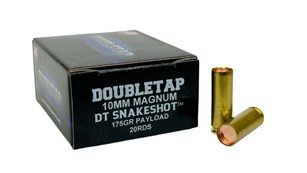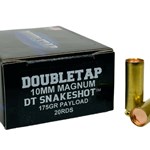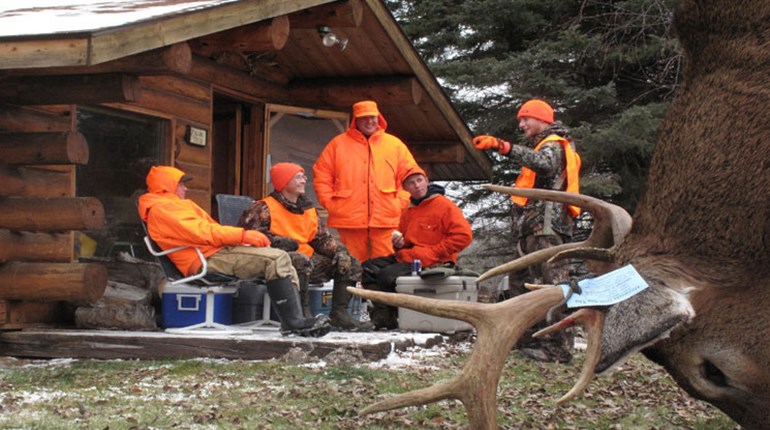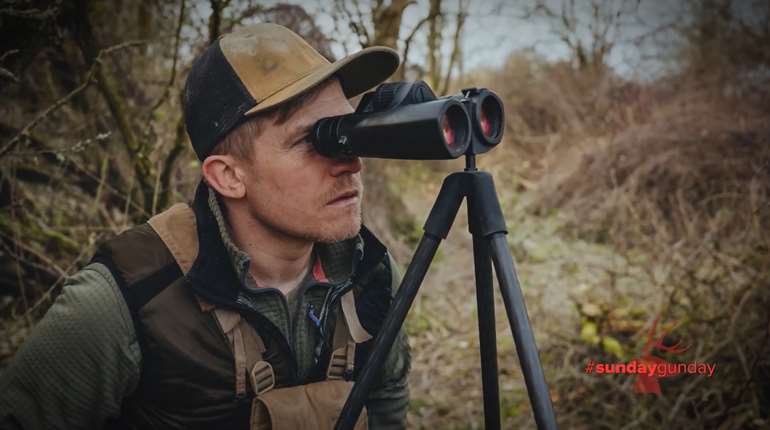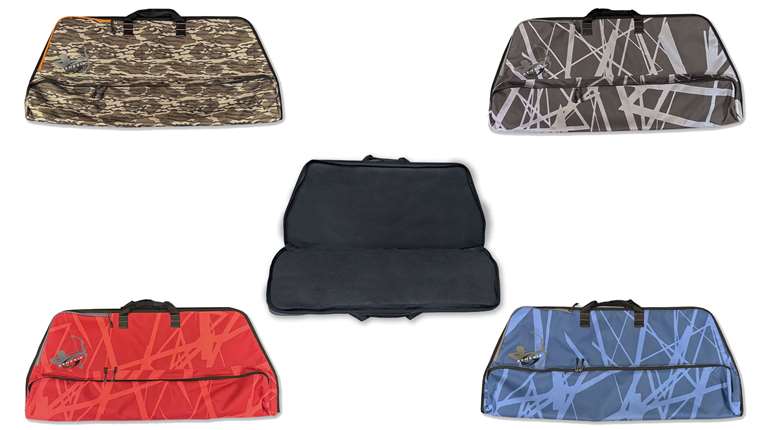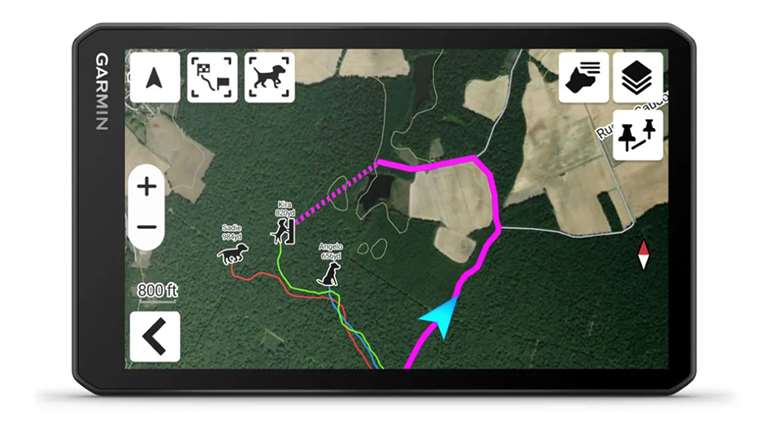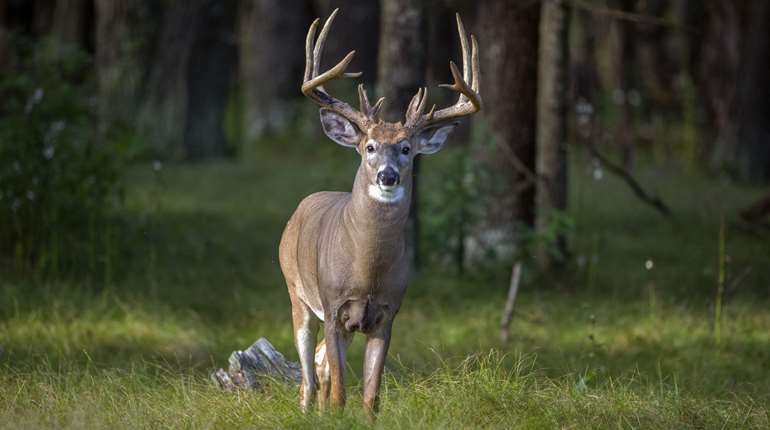The kill was premeditated. That was the greatest part. The buck I’d scouted and hunted all bow season and then for a week into the gun season did what I thought he would. Oh, he did what I expected a few times during the bow season. One time the 10-point chased a doe right by me but wouldn’t stop, and he had some other lucky breaks. The buck’s luck ran out when he used a strip of cover so thick the Amazon jungle seems airy by comparison. (Really, I’ve been to the Amazon and it has nothing but snakes on this wetland area.) In a few more steps he’d have been safe in the dank and shady depths of his sanctuary. I’m relating this because some preeminent deer researchers and a lot of studies told me to hunt this particular spot. Even better, their data can show you how to find your own big-buck hangout.
Finding a Big Buck’s Core Area
“Sure, I believe in creating hourglass-shaped food plots,” says Brian Murphy, CEO of the Quality Deer Management Association. “In an area with low hunting pressure, mature bucks will walk into the plot in daylight and a hunter at the pinch point in the hourglass has the best chance of getting a shot with a bow. But in most real-world scenarios your odds of getting that buck are higher if you throw a dart at a map. A lot of studies using data from GPS collars on bucks show that mature bucks get old by avoiding such spots in daylight. At night they might have a party under a stand on a plot, but in daylight they stay back in the cover.”
Brian explains that most hunters—those of us who have 20-, 50- and 100-acre sections to hunt—should look at properties differently than those guys who have big, private farms.
“A buck old enough to impress,” says Brian, “has chosen a safe core area.” A buck’s core area is the portion of its range where it spends most of its time during daylight. “Studies show this might be 59 acres in Louisiana or 224 acres in South Texas,” says Brian. “It’s dependent on cover and hunting pressure. To kill a certain buck you have to start by pinpointing its core area.”
Grant Woods, a deer biologist who is often hired to improve deer properties, makes this same point in another way. He says, “Hunters often think of food sources, the rut and travel routes when they scout and set stands. That’s fine, but if they want big deer they should first think about fear. Old bucks move and hide like someone is trying to shoot them. So you start with cover.”
Both Brian and Grant explain that most hunters should look for thick, nasty cover. It doesn’t have to be big: 10 acres is enough. “You want to hunt places where mature bucks spend their days,” says Grant. “I’ve killed most of my big bucks in thick cover.”
“Don’t go into that security cover [when scouting],” says Brian. “Place cameras on trails leading into the cover. When you find a good buck, triangulate your cameras until you’ve identified his pattern.”
Enhancing Buck Zones
If you own a piece of property or the landowner gives you permission, you can help create a place that’ll hold big deer in daylight.
“Always put the food plot in the center of a small property,” says Grant. “This way deer will feel as safe as possible feeding during daylight and other hunters won’t be able to see into your food plot.”
Brian adds, “You can’t beat the farmers, so unless you’re in an area that doesn’t have agriculture, time your plantings and what you plant so you’ll have food in your plots after the combines do their work. That way you’ll have the deer during the season.”
If possible, create thick security cover around your property’s perimeter. “Other people don’t like walking through that thick stuff, and other hunters won’t be able to see into it,” says Grant.
You can use a chainsaw, but a simpler, and in some ways better, option is to “hack and squirt” undesirable (non fruit- or mast crop-producing) trees. Basically, you use a hatchet to chop away some bark and squirt in an herbicide. (Grant says just Google “hack and squirt” for the region you live in and you’ll find the herbicides that work best in your area.)
“What happens is, the trees die after about a year,” says Grant. “Sunlight is then able to reach the forest floor. This allows grasses and saplings to grow. Meanwhile, the now-dead tree slowly dries out and eventually sheds its limbs before finally falling. Throughout the process you’ll have added browse and security cover for deer.”
Brian adds, “Bucks like these thick areas for daytime beds. Also, during the rut, does seek them out to avoid being harassed by cruising bucks. Bucks know this, so during midday when the rut is on bucks will often circle through thick cover. They’ll also bring estrous does to thick areas to hide from other bucks.”
Depending on your situation, you can drop round hay bales or even cut down trees to tighten a buck funnel between thick areas deer use as they go to and from a sanctuary. “I know a few wealthy hunters who’ve put up lines of fencing to force bucks to cruise a certain way,” says Grant. “I don’t go that far, but in the right situation creating bottlenecks can up your odds.”
Hunting Daylight Buck Hangouts
Hunting near or in buck sanctuaries requires very low-impact-style hunting. If you bump a small piece of security cover by walking in or allowing your scent to blow in, mature bucks will either go nocturnal or they’ll move on. “Start by hunting on trails in the evening about 100 yards off the downwind side,” says Grant. As the season, rut and possibly hunting pressure progresses you can move closer, provided you have a low-impact way to slip out after a morning sit or after dark.
“Depending on how your security cover is shaped and how the wind is on a particular day,” says Brian, “you might be able to get in tight to the cover. This is even better during the rut if you can hunt in a bottleneck between two sections of thick cover. When the rut’s hot and the wind is right, this is the kind of spot you sit in all day.”
That’s how I took my buck. I hung a stand in a thick strip of cover I knew a buck was using to move from open forest to a thick wetland area. To get in position I had to slip in with a climbing stand an hour before daylight. Understanding the science behind that buck’s pattern kept me motivated.










